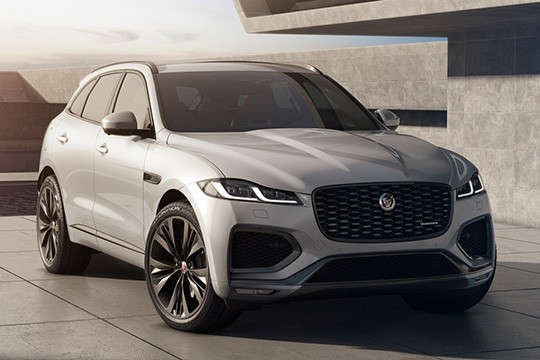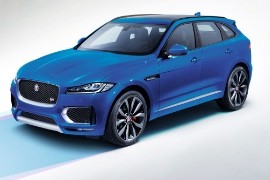JAGUAR F-Pace Models/Series Timeline, Specifications & Photos
First production year: 2015
Engines: Mild hybrid diesel, Gasoline, Hybrid, Diesel, Mild hybrid
Body style: SUV (Sports Utility Vehicle)
With the plug-in hybrid version of the F-Pace, Jaguar offered a good option for a luxurious, compact-sized, SUV for the market. It offered good performances as well.
When most of the car-makers started to switch their attention toward the increasing SUV market, Jaguar just had to ask its sister-company Land Rover to help them. The result was the 2016 Jaguar F-Pace built on the same platform with the Range Rover Velar. In 2020, the British brand introduced a plug-in hybrid version, which proved to be an interesting vehicle with a fair electric range for the urban daily commute and a powerful drivetrain useful for long-distance trips.
The 2020 F-Pace featured a restyled front end, with a smoother hood and LED headlights. There was an option for pixel-LED, which analyzed and adapted the lights if any oncoming traffic appeared. For the plug-in hybrid version, it featured fewer air-vents in the front. The big bumper featured three air-intakes, to complement the radiator grille and cool the brakes. In the rear, the same slim taillights as before were slightly redesigned and featured LED as well.
The interior was luxurious, with the Jaguar standards. The instrument cluster featured a centrally-mounted tachometer with the speedometer in the middle, on a TFT display, with two other screens on the left and right of it. On the center stack, there was a completely new infotainment system, with an 11.4” curved-glass HD touchscreen. On the center console, there was a gear-selector with a lever, instead of the already known rotary knob.
Under the hood, the F-Type offered a choice of gasoline, diesel, and hybrid engines ranged between 250 hp and 404 hp. The latter was offered as a plug-in hybrid as well.
JAGUAR F-Pace 2.0L 8AT AWD (163 HP)
Jaguar waited for a long time until it decided to join the SUV bandwagon and introduced the F-Pace in 2015 as its first crossover on the market.
Despite being in the same boat as Land Rover, and thus benefiting from the experience of one of the most reputable 4x4 makers in the world, Jaguar was reluctant to offer such a vehicle. At first sight, the British brand's customers were more attracted by sportscars, grand tourers, and luxurious sedans, not station wagons, not SUVs. And yet, their tastes changed, and when the F-Pace was introduced, Jaguar got more orders than it could handle for this new model.
The design was signed by Ian Callum, the man responsible for Jaguar cars' look for more than two decades. It used similar lines for the headlights as in the XF and styled the grille and rear quarter panels in the same way as he did with the F-Type. In addition, the retractable door handles were carried over from Jaguar's smallest sports car. Moreover, by creating a crossover, Jaguar also solved the problem for those who liked this British brand, needed more trunk space, but needed to b into station wagons.
For Jaguar, it was easier to create the interior. It already knew the recipe: fancy materials, polished-looking metallic parts, and the finest leather in the house. Here, it listened carefully to the people from Land Rover and considered their experience. Unfortunately, that led to high-mounted seats, which was different from what a customer for a crossover has been looking for. But this solution solved the problem with the legroom for the rear passengers.
Jaguar picked the right time to launch the F-Pace. It made it with Euro6 engines, either gasoline or turbodiesel. Furthermore, it produced the car with hybrid drivetrains so it could provide not just good performance but also provide better fuel efficiency.

